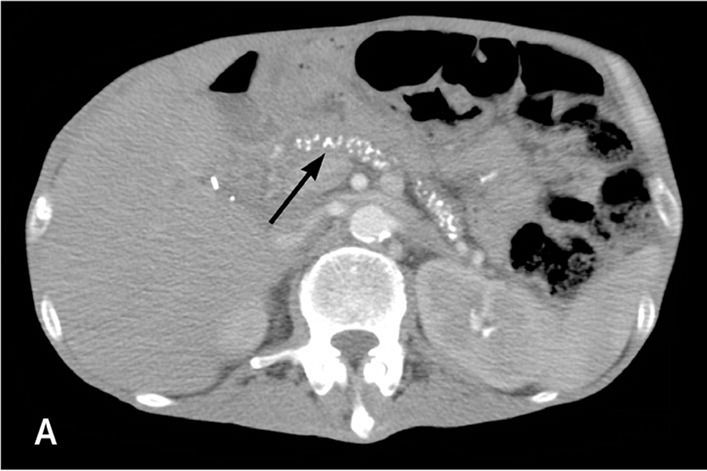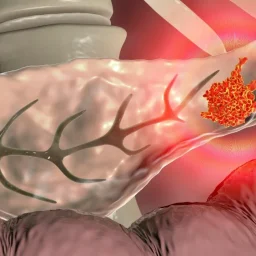
Understanding Chronic Pancreatitis and Its Impact on Health
Chronic pancreatitis is a progressive inflammatory disease of the pancreas that leads to irreversible damage to pancreatic tissue. The most common causes of chronic pancreatitis include alcohol abuse, genetic factors, high triglyceride levels, and autoimmune conditions. The disease is characterized by recurring episodes of inflammation, which can cause:
- Severe abdominal pain: Often felt in the upper abdomen, which may radiate to the back.
- Digestive problems: These can include bloating, gas, diarrhea, and malabsorption of nutrients due to insufficient pancreatic enzymes.
- Fatigue and weakness: Commonly experienced due to nutrient deficiencies and the body’s inability to properly digest food.
- Diabetes: As the disease progresses, it may impair the pancreas’s ability to produce insulin, leading to diabetes.
While chronic pancreatitis primarily affects digestion and metabolic processes, it also has significant effects on emotional and physical health. These effects can severely limit a patient’s physical activity and overall quality of life, making it critical to integrate exercise as a therapeutic component in managing the disease.
Why Exercise Is Important for Chronic Pancreatitis Patients
Exercise offers a wide range of benefits for those living with chronic pancreatitis. Beyond just maintaining physical fitness, regular activity can help address the unique challenges of managing the disease. Here are some of the key reasons why exercise is essential for individuals with CP:

1. Improvement in Digestion and Nutrient Absorption
Physical activity can stimulate the digestive system, helping to promote better digestion and nutrient absorption. For CP patients, who often suffer from malabsorption due to insufficient pancreatic enzymes, exercise can assist in maintaining optimal digestive health. Regular movement supports the proper function of the intestines and improves bowel regularity.
2. Alleviation of Pain and Inflammation
While exercise might initially seem like a painful prospect, gentle physical activity can actually help reduce chronic pain and inflammation. Studies have shown that moderate-intensity exercise can reduce systemic inflammation, which is critical for managing chronic conditions like pancreatitis. By promoting blood circulation, exercise can also improve the delivery of nutrients and oxygen to inflamed tissues, contributing to pain relief.
3. Mental Health Benefits
Living with chronic pancreatitis can be mentally and emotionally draining. Stress, anxiety, and depression are common among individuals with long-term health conditions. Exercise, especially aerobic activities like walking or swimming, has been shown to improve mood, reduce anxiety, and enhance mental well-being by promoting the release of endorphins. This psychological benefit is especially crucial for managing the emotional burden of living with a chronic illness.
4. Maintenance of Healthy Weight and Muscle Mass
A sedentary lifestyle can lead to the loss of muscle mass and contribute to weight gain, both of which can complicate the management of chronic pancreatitis. Regular exercise, particularly strength training and aerobic activities, can help prevent these issues, promoting healthy muscle mass and a stable weight. This is essential because obesity and sarcopenia (muscle loss) can exacerbate many of the symptoms associated with CP.
5. Management of Blood Sugar Levels
People with chronic pancreatitis are at a higher risk of developing diabetes due to pancreatic insufficiency. Exercise can help regulate blood sugar levels and improve insulin sensitivity, which is vital for preventing or managing diabetes. Both aerobic exercise and strength training can enhance the body’s ability to manage glucose, reducing the likelihood of developing diabetes-related complications.
Types of Exercises That Are Safe and Effective for Chronic Pancreatitis Patients
Not all exercises are suitable for individuals with chronic pancreatitis. It is essential to choose activities that do not exacerbate symptoms or cause unnecessary strain on the body. Below are some types of exercise that are typically recommended for chronic pancreatitis patients:

1. Walking
Walking is one of the best exercises for individuals with chronic pancreatitis, as it is low-impact and easy to incorporate into daily life. It provides cardiovascular benefits, boosts circulation, and helps maintain a healthy weight. For CP patients, starting with short walks and gradually increasing duration and intensity is a good way to ease into a more active lifestyle. Aim for 20-30 minutes of brisk walking several times a week, ensuring that the pace is comfortable and not strenuous.
2. Swimming and Water Aerobics
Swimming and water aerobics are excellent exercises for CP patients, as the buoyancy of the water reduces strain on the joints and muscles while providing an effective full-body workout. The water’s support helps alleviate pain, particularly for individuals who may have trouble with joint discomfort. Swimming also promotes cardiovascular health and flexibility. Water aerobics classes specifically designed for those with chronic conditions can be a fun and supportive way to exercise.
3. Yoga
Yoga is a gentle yet effective form of exercise that can provide numerous benefits for those with chronic pancreatitis. It emphasizes flexibility, relaxation, and mindful breathing. Many yoga poses help relieve abdominal discomfort, reduce stress, and improve posture. Yoga can also help stretch tight muscles and release tension that may contribute to pain or discomfort in the abdomen. Gentle styles of yoga, such as Hatha or Restorative Yoga, are ideal for individuals with chronic pancreatitis.
4. Pilates
Pilates is another excellent low-impact exercise that focuses on core strength, stability, and posture. Strengthening the core can provide stability to the body and improve overall movement efficiency. Pilates exercises can also improve flexibility and enhance body awareness, which is beneficial for reducing pain and improving quality of life in CP patients.
5. Strength Training (Light to Moderate)
Strength training, when done correctly, can help maintain muscle mass, improve bone density, and promote overall physical strength. Using light weights or resistance bands, individuals with chronic pancreatitis can build strength in a way that does not strain the pancreas or digestive system. It is important to start with light weights and avoid overexertion, focusing on higher repetitions rather than heavy lifting.
How to Safely Incorporate Exercise into a Routine
Before beginning any exercise regimen, it is crucial to speak with a healthcare provider to ensure that the activities chosen are safe for your specific condition. The following tips will help individuals with chronic pancreatitis safely incorporate physical activity into their lives:

- Start Slowly: Begin with low-intensity exercises, such as walking or swimming, and gradually increase the duration and intensity as tolerated.
- Listen to Your Body: Pay attention to any signs of pain, discomfort, or fatigue during or after exercise. If pain occurs, stop immediately and consult your healthcare provider.
- Stay Hydrated: Proper hydration is important for everyone, but particularly for individuals with chronic pancreatitis, as dehydration can worsen symptoms.
- Mix It Up: Incorporate a combination of aerobic, strength, and flexibility exercises to ensure a well-rounded fitness plan.
- Avoid Heavy Lifting: While strength training can be beneficial, avoid heavy lifting that could strain the abdominal muscles and pancreas.
Exercise plays an essential role in managing chronic pancreatitis and improving the overall quality of life for those affected by the condition. By engaging in appropriate physical activities, patients can reduce pain, improve digestion, maintain a healthy weight, and boost mental health. Walking, swimming, yoga, Pilates, and light strength training are all excellent options that can help individuals with chronic pancreatitis live more active and fulfilling lives.
Always consult with a healthcare provider before starting any exercise program, and remember to listen to your body to avoid overexertion. With the right approach, exercise can be a powerful tool in the management of chronic pancreatitis and in enhancing overall well-being.















